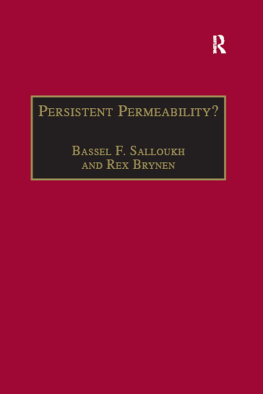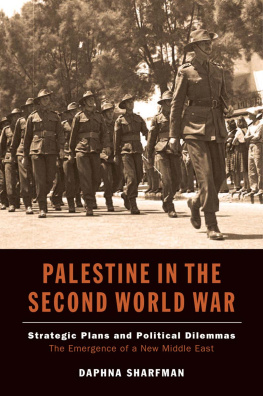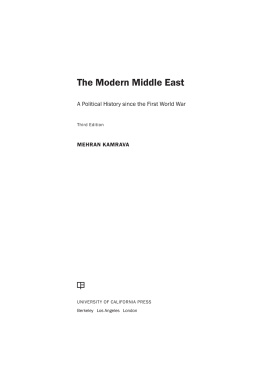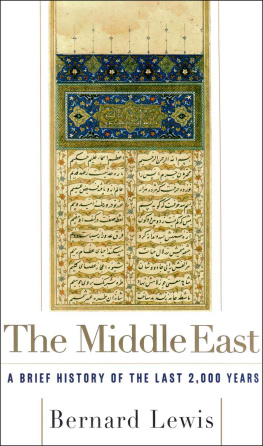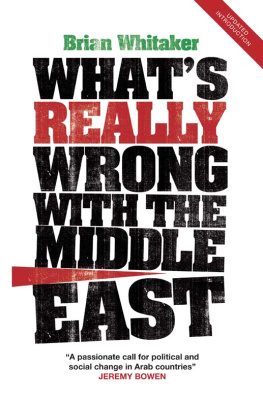Gad G. Gilbar - Population Dilemmas in the Middle East
Here you can read online Gad G. Gilbar - Population Dilemmas in the Middle East full text of the book (entire story) in english for free. Download pdf and epub, get meaning, cover and reviews about this ebook. year: 2012, publisher: Routledge, genre: Politics. Description of the work, (preface) as well as reviews are available. Best literature library LitArk.com created for fans of good reading and offers a wide selection of genres:
Romance novel
Science fiction
Adventure
Detective
Science
History
Home and family
Prose
Art
Politics
Computer
Non-fiction
Religion
Business
Children
Humor
Choose a favorite category and find really read worthwhile books. Enjoy immersion in the world of imagination, feel the emotions of the characters or learn something new for yourself, make an fascinating discovery.

- Book:Population Dilemmas in the Middle East
- Author:
- Publisher:Routledge
- Genre:
- Year:2012
- Rating:5 / 5
- Favourites:Add to favourites
- Your mark:
- 100
- 1
- 2
- 3
- 4
- 5
Population Dilemmas in the Middle East: summary, description and annotation
We offer to read an annotation, description, summary or preface (depends on what the author of the book "Population Dilemmas in the Middle East" wrote himself). If you haven't found the necessary information about the book — write in the comments, we will try to find it.
Population Dilemmas in the Middle East — read online for free the complete book (whole text) full work
Below is the text of the book, divided by pages. System saving the place of the last page read, allows you to conveniently read the book "Population Dilemmas in the Middle East" online for free, without having to search again every time where you left off. Put a bookmark, and you can go to the page where you finished reading at any time.
Font size:
Interval:
Bookmark:

University of Haifa and Moshe Dayan Center, Tel Aviv University

FRANK CASS & CO. LTD.
2 Park Square, Milton Park,
Abingdon, Oxon, OX14 4RN
FRANK CASS
270 Madison Ave,
New York NY 10016
A catalogue record for this book is available from the British Library
A catalog record for this book is available from the Library of Congress
Photograph by John Samples.
| AAS | Asian and African Studies |
| ARE | Arab Republic of Egypt |
| CAPMAS | Central Agency for Public Mobilisation and Statistics (Cairo) |
| CBS | Central Bureau of Statistics (Jerusalem) |
| DESIPA | Department for Economic and Social Information and Policy Analysis |
| DK | Dawlat al-kuwayt |
| DS | Department of Statistics (Amman) |
| EIU | Economist Intelligence Unit |
| ESCWA | Economic and Social Commission for Western Asia |
| GDP | Gross Domestic Product |
| GNP | Gross National Product |
| HKJ | The Hashemite Kingdom of Jordan |
| IBRD | International Bank for Reconstruction and Development |
| IJMES | International Journal of Middle East Studies |
| IMF | International Monetary Fund |
| J'AS | al-Jumhuriyya al-'arabiyya al-suriyya |
| JPS | Journal of Palestine Studies |
| JSGAS | Judaea, Samaria and Gaza Area Statistics |
| MECS | Middle East Contemporary Survey |
| MEED | Middle East Economic Digest |
| MEJ | Middle East Journal |
| MENA | Middle East News Agency |
| MES | Middle Eastern Studies |
| MTM | Marchs Tropicaux et Mditerraneens |
| OAPEC | Organization of Arab Petroleum Exporting Countries |
| PE | Petroleum Economist |
| PLO | Palestine Liberation Organization |
| SAI | Statistical Abstract of Israel |
| SY | Statistical Yearbook |
| UNCTAD | United Nations Conference on Trade and Development |
| UNDP | United Nations Development Programme |
| UNFPA | United Nations Fund for Population Activities |
| UNIDO | United Nations Industrial Development Organization |
| UNRWA | United Nations Relief and Works Agency for Palestine Refugees in the Near East |
| USAID | United States Agency for International Development |
| WB | World Bank |
Font size:
Interval:
Bookmark:
Similar books «Population Dilemmas in the Middle East»
Look at similar books to Population Dilemmas in the Middle East. We have selected literature similar in name and meaning in the hope of providing readers with more options to find new, interesting, not yet read works.
Discussion, reviews of the book Population Dilemmas in the Middle East and just readers' own opinions. Leave your comments, write what you think about the work, its meaning or the main characters. Specify what exactly you liked and what you didn't like, and why you think so.

